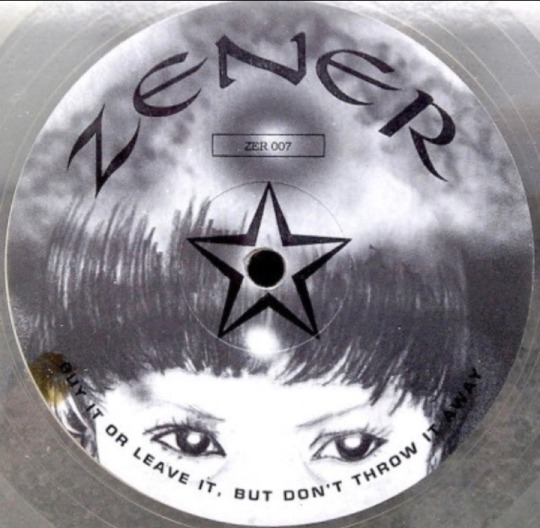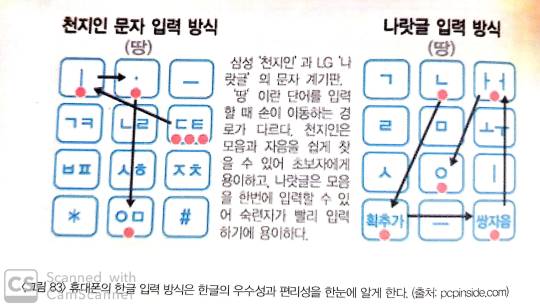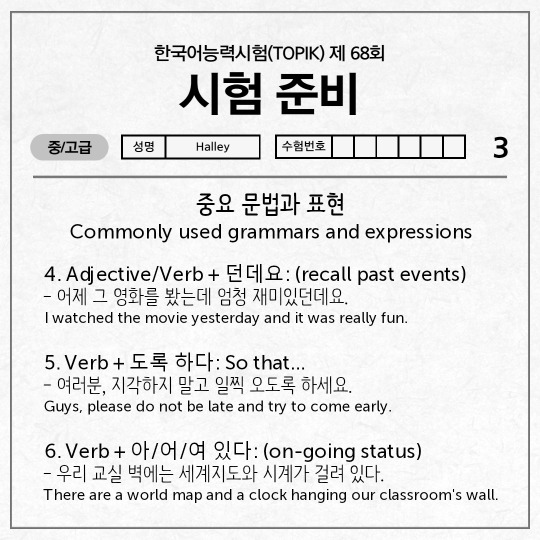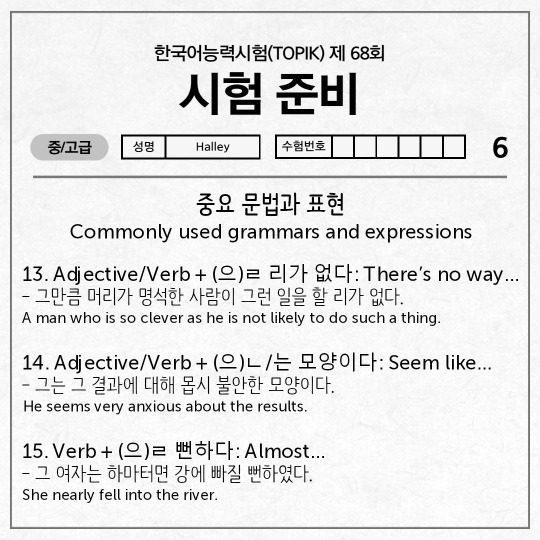#ㄹ 1 9 9 9 9 9 9 9 ㄹ
Text



☯︎ 。* . Sr. 毫克吉爾 ! Bon Tyu ´ 𑁍







#ᣞ 𓈒 我知道, Do yOu know. We know 、#私たちは流砂の中にいます 、 Nous TomberOns *#、 It's nO Use Trying ! 我們跌倒了,寶貝 .#y2k grunge#cyber y2k#rose details#rose lq#rose moodboard#blackpink#blackpink rose#blackpink lq#:00000#、我們會好嗎? We will#· 𖡬 HEARTS의 열충격 D' Crystal *#:3c :3c :3c#ㄹ 1 9 9 9 9 9 9 9 ㄹ#⃝⠀⠀⏜⠀⠀ film ' rosé アメリカ人#vintage#. ‿୨˚̣̣̣͙୧‿୨˚̣̣̣͙୧‿. 私はまた死にましたか?#retro fashion#:000's# 𝆬 ˳ ✳︎ i3cat 𓂃 ‹3
584 notes
·
View notes
Text

🌸🌼🌸 30-Day Journey to Korean Language Mastery! 🌸🌼🌸
Hey there language lovers! Are you ready for an exciting adventure in learning Korean at a more intermediate level? 🇰🇷✨ In this 30-day study schedule, we'll dive into some juicy grammar topics that'll take your Korean skills to the next level. Ready to embark on this language adventure? Let's rock this 30-day challenge together! Happy studying and remember, every step counts on the road to Korean language mastery! 화이팅! 💪✨
Week 1: Verb Modification and Advanced Sentence Structures
Day 1: Time to dust off those honorifics and level up your respect game! Show some love to those verbs with various honorific verb endings.
Day 2-3: Let's express our wishes and assumptions with "았/었으면 좋겠다" (I wish I had) and "-(으)ㄹ 텐데" (I suppose, I think). Wishful thinking, here we come! 🌠
Day 4-5: No more doubts about "have to" or "can do"! Master "-아/어/여야 하다" (have to, must) and "-아/어/여도 되다" (can, may).
Day 6-7: Weave your magic into sentences with various verb modifications and advanced structures using the things you've studied the past few days.
Week 2: Subjunctive and Concessive Expressions
Day 8-9: Curiosity piqued? Delve into "-아/어/여 보다" (try to do) and "-아/어/여지다" (become something). Adventure awaits! 🚀
Day 10-11: Unveil the power of "even if" with "-더라도" and the allure of "either" with "-든지".
Day 12-13: Embrace "no matter how much someone says" with "아무리~-(으)라고 해도" and the certainty of "regardless of" with "-든간에".
Day 14: Take a deep breath and look back on the amazing grammar points we've conquered so far! You're soaring to new heights! 🦅
Week 3: Advanced Particles and Connectives
Day 15-16: Adventure calls! Set out on "-을 테니까" (since I will) and navigate "-느라고" (because of, due to).
Day 17-18: Embrace the twists and turns of "-를 지경이다" (to the extent of) and "-는바람에" (because of, on account of). The path may be challenging, but you're up for it!
Day 19-20: "Even if it's tough, let's do it!" Dive into "-아/어/여서라도" and "might have to do" with "-아/어/여야 할지도 모르다".
Day 21: Let's take a moment to bask in the glory of the grammar points we've mastered in Week 1 to Week 3. Proud language learners unite! 🌟
Week 4: Expressing Intention and Assumptions
Day 22-23: Master the art of expressing intentions with "기로 하다" (decide to do) and "으려던 참이다" (was about to do). Your plans are set in motion!
Day 24-25: Delve into assumptions with "ㄴ/는다고 하다" (heard that) and "ㄹ/을 것 같다" (seems like). The mystery unfolds! 🔍
Day 26-27: Let's get speculative with "것 같으면서" (while feeling like) and "(으)니까" (since, because). The intrigue continues! 🕵️♂️
Day 28: Embrace your linguistic prowess as you navigate the subtleties of intention and assumptions. Let's recap the past few days!
Week 5: Advanced Particles and Expressions
Day 29-30: Explore the nuances of "만에 하다" (to do after a long time) and "아니면서도" (although, even though). Time to fine-tune your expressions!
Day 31: Reflect on your incredible progress and pat yourself on the back for conquering advanced grammar structures. You've come so far, and there's no stopping you now! 🎉
#Learn#Learning#Language Learning#korean#studyblr#koreanblr#langblr#study#vocabulary#vocab#words#studying#Vocabulary#Vocab#Words#Practice#study challenge#30 day challenge#language
225 notes
·
View notes
Text

All Intermediate Korean Grammar
⚠️this is a masterlist of intermediate Korean grammar concept. If you want the beginner list, look here! If you want to download this list in order to print it or something similar, I turned it into a PDF and you can access it for free on my website - access it here!
Full List:
Expressing Supposition in Korean
1.1 A-아/어 보이다 or A-게 보이다 grammar = look like, seem like ~guess based on outward appearance
1.2 A/V-(으)ㄴ/는 모양이다 grammar = it seems, I guess ~refer or guess a situation after observation
1.3 A/V-(으)ㄹ텐데 grammar= would, suppose…(so/but) ~express an expected future situation
1.4 A/V-(으)ㄹ 테니까 grammar = suppose,will...(because) ~give reason for suggestion or advice
1.5 A/V-(으)ㄹ걸요 grammar = probably, I think ~express assumption based on backup knowledge
1.6 A/V-(으)ㄴ/는/ㄹ 줄 몰랐다 and -(으)ㄴ/는/ㄹ 줄 알았다 grammar = I didn't know / I thought that
1.7 A/V-(으)ㄹ지도 모르다 grammar = might, may ~express a guess that something might happen
2. Expressing Contrast in Korean
2.1 A/V-기는 하지만, -기는 -지만 grammar = but (I think) ~express contrast with emphasis in different view or belief
2.2 A/V-(으)ㄴ/-는 반면에 grammar = but, while ~express opposite things
2.3 A-(으)ㄴ데도, V-는데도 grammar = although, despite that ~express a contrast
3. Expressing Reason in Korean
3.1 A/V-거든요 grammar = because ~used to respond to a question/statement to provide a reason/thinking
3.2 A/V-잖아(요) grammar = (1) as you know, (2) didn't I told that ~(1) remind listener about something, (2) rebuke listener
3.3 V-느라고 grammar = because, due to ~give a reason for a negative consequence
3.4 V-는 바람에 grammar = because, as a result ~give an unexpected reason for a negative consequence
3.5 A/V-고 해서 grammar = so, because (among all) ~give the main reason among reasons for doing action
3.6 A-(으)ㄴ 탓에/ V-는 탓에 grammar = due to, because ~give reason for a negative consequence
3.7 A/V-(으)ㄹ까 봐 grammar = be worried/afraid that ~express concern about something
3.8 N 덕분에, A/V-(으)ㄴ/는 덕분에 grammar = thanks to ~express the reason for the positive result of an action or state
4. Expressing Resolution and Intent in Korean
4.1 V-(으)ㄹ까 하다 grammar = be thinking of ~express a vague intention or uncertain plan
4.2 V-고자 (하다) grammar = did A to do B/ plan to ~express intention to do an action
4.3 V-(으)려던 참이다 grammar = be just about to ~the speaker is about to do something
4.4 V-(으)ㄹ 겸 (해서)/N 겸 grammar = and also ~express an action has two or more purposes
4.5 V-아/어야지(요) grammar = will do, must do ~express strong intention or decision to do something
5. Expressing Recommendation and Advice in Korean
5.1 V-ㄹ/을 만하다 grammar = be worth doing, deserve ~indicate something worth doing
5.2 V-도록 하다 grammar = please (be sure to) do ~suggest someone do something
5.3 V-지 그래요? grammar = why not, why don't ~suggest someone to do something
5.4 V-는 게 좋(겠)다 grammar = would better, be good to ~advice or suggest someone to do something
6. Expressing Recollection in Korean
6.1 V-던 grammar = be used to ~recollect a past habit or repeated behavior
6.2 A/V-더라고요 grammar = I saw/experienced that ~express speaker's recollection about past event with witness
6.3 V-던데요 grammar = I saw/felt/surprised that ~express contradiction to one’s speaking or surprise to something
7. Using Passive Expressions in Korean
7.1 Irregular Korean passive verbs with (-이/히/리/기) suffix = to be V-ed
7.2 V-아/어지다 grammar = to be V-ed ~a passive form that is used with verbs without -이/히/리/기-affix
7.3 V-게 되다 grammar = get V-ed, end up V-ing ~passive form without subject’s will
8. Using Causative Expressions in Korean
8.1 단어 사동사 (-이/히/리/기/우/추-) irregular causative verbs = subject cause/do something for someone
8.2 A/V-게 하다 grammar = make someone do/be something ~subject makes someone do action
9. Expressing Conditions in Korean
9.1 V-아/어야 grammar = (have to) do A, so B can ~express a condition to realize something
9.2 A/N/V-거든 grammar = if (something is true), then ~express condition in casual conversation
10. Expressing Additional Information in Korean
10.1 V-(으)ㄹ 뿐만 아니라 grammar = not only A, but also B ~express additional information
10.2 V-ㄴ/는 데다가 grammar = and also, moreover ~express additional information about the same subject
10.3 N-조차 grammar = (not) even …~ “not only the others but also the primary one”
10.4 N-만 해도 grammar = just, even just N ~provide examples to explain a previous statement
10.5 A/V-고요 and -구요 grammar = also, too ~ used to add information or ask for additional information
11. Expressing Mid-action in Korean
11.1 V-는 길에 grammar = on the way, while going ~doing something while going somewhere
11.2 V-다가 grammar = and/but then ~express interruption of one action to do another
12. Expressing Degree in Korean
12.1 A/V-(으)ㄹ 정도로 grammar = (to the extent) that ~express degree or extent of an action or state
12.2 N-만 하다 grammar = as big as, about the size of ~compare the size or degree of something to another
12.3 A(으)ㄴ 만큼, N만큼, V는 만큼 grammar = as much as, like ~indicate something equivalent to another
13. Expressing Choice in Korean
13.1 아무 +(이)나/ 아무 +도 grammar = anyone, anything... /nobody, nothing...
13.2 N(이)나 grammar (3) = N or something ~express an acceptable option without specific preference
13.3 N(이)라도 grammar = even N ~choose 2nd choice if the best isn't available
13.4 A/N/V-든지 든지 grammar = whether… or... ~expressing any choices are fine
13.5 A-ㄴ/은 대신에, V-는 대신에 grammar = instead of V-ing ~action can be replaced by another
14. Expressing Time Order/ Sequential-based Situation in Korean
14.1 N 만에 grammar = (a time period) after doing ~a duration has passed after an event started
14.2 V-아/어 가지고 grammar = and (then) ~express time order of 2 actions
14.3 V-아/어다가 grammar = and then ~action is done based on the previous one or activity that occurs in 2 places
14.4 V-고서 grammar = and then ~ express time order of 2 actions
15. Expressing Discovery / Cause and Effect in Korean
15.1 V-고 보니 grammar = after finishing something, I realized/ found out
15.2 V-다 보니 grammar = while/after doing sth repeatedly, I realize/come to
15.3 V-다 보면 grammar = if you keep doing, then (something will likely occur)
15.4 A/V-더니 grammar = (1) and now, (2) and then, (3) but now
15.5 V-았/었더니 grammar = (1) 'so...now', (2) 'and I found that', (3) connecting quote with action, (4) recall a behavior
15.6 A/V-다가는 grammar = if (the action is continued, a negative outcome will occur)
15.7 A/N/V-(으)ㄴ/는 셈이다 grammar = I could say, it's practically (more or less similar to another)
15.8 V-기 쉽다 and V-기 어렵다 grammar = easy to/ difficult to ~express something easy or difficult to do
16. Expressing State of Being in Korean
16.1 V-아/어 놓다 grammar = keep V-ing/ do sth beforehand (for future use)
16.2 V-아/어 두다 grammar = keep V-ing/ do sth in advance (for future use)
16.3 V-(으)ㄴ 채로 grammar = while ~action occurs while maintaining the state of a situation
16.4 N-대로, V-ㄴ/는 대로 grammar = based on, just as expected, as soon as
17. Expressing Characteristics in Korean
17.1 A-(으)ㄴ 편이다, V-는 편이다 grammar = rather A, tend to V...(than usual)
17.2 N-스럽다 grammar = Adj (-ful, -ly, -some,...) ~Express a quality or feeling like the noun
17.3 N-답다 grammar = N-like, be like a N ~Express an expected quality associated with the noun
18. Expressing Emphasis in Korean
18.1 얼마나 A-(으)ㄴ지 모르다, 얼마나 V-는지 모르다 grammar = didn't know that something really A/V ~emphasize the degree of action or state
18.2 A/V-(으)ㄹ 수밖에 없다 grammar = have no choice but to do V, be expected to be A
18.3 A/N/V-(으)ㄹ 뿐이다 grammar = only, just ~indicate only one available course of action/state
18.4 N-(이)야말로 grammar = indeed, exactly, the very ~emphasize the preceding noun
19. Expressing Intentions in Korean
19.1 V-게 grammar = so that, in order to ~focus on the goal to do action
19.2 V-도록 grammar = in order to, so that ~focus on the action to achieve the goal
20. Expressing Completion in Korean
20.1 V-았/었다가 grammar = but then ~after the completion of an event, the opposite event happens
20.2 A/N/V-았/었던 grammar = (reminiscence) ~recall a past event that has not continued to present.
20.3 V-아/어 버리다 grammar = Express speaker’s feeling to the completed event/action
20.4 V-고 말다 grammar = end up V-ing ~showing an unplanned action completed undesirably
21. Expressing Uselessness in Korean
21.1 V-(으)나 마나 grammar = 'be no use doing/ even without doing' ~the result is same whether or not you do
21.2 A/V-아/어 봤자 grammar = even if doing/ being...it's no use/ won't be that much
22. Expressing Hypothetical Situation in Korean
22.1 N(이)라면, A/V-ㄴ/는다면 grammar = If this/that happens, one will/ would...
22.2 A/V/N-았/었더라면 grammar = If I had ~assume a past situation opposite to what happened
22.3 V-(으)ㄹ 뻔하다 grammar = almost, nearly ~indicate something almost happened but did not
23. Expressing Regrets in Korean
23.1 V-(으)ㄹ걸 그랬다 grammar = 'I should have' ~regret not doing something better than what was done
23.2 A/V-았/었어야 했는데 grammar = 'I should have done' ~regret something should have done but did not
24. Expressing Habits and Attitudes in Korean
24.1 V-곤 하다 grammar = (1) often, (2) used to ~indicate a habit of present or past
24.2 A/V/N-기는요 grammar = 'not really', 'no need to' ~Politely disagree with one’s statement or compliment
24.3 A-(으)ㄴ 척하다, N인 척하다, V는 척하다 grammar = pretend to, act like
25. Citing One's Speech or Writing in Korean
25.1 A/V/N-다고 하던데 grammar = I heard that...~recall something you heard from someone
25.2 A/V/N-다고요? grammar = did you say/ I said … ~reconfirm/restate what you've just heard/said
25.3 A/V/N-다면서요? grammar = is it true that... ~confirm something you’ve heard or learned
25.4 A/V/N-다니요? grammar = ...really? ~express surprise or disbelief while repeating what someone said.
⚠️I got this list from the “KoreanTopik” website, but you can find a list of grammar like this in ‘Korean Grammar In Use’ textbook. If you didn’t know there’s also a website that has all the lessons - sayhikorean.blogspot.
#한국어#korean langblr#masterlist#korean masterlist#all intermediate korean grammar#intermediate korean grammar#korean grammar#한국어 문법
73 notes
·
View notes
Photo

"특별한 기적을 기다리지마
눈 앞에선 우리의 거친 길은
알 수 없는 미래와 벽
바꾸지 않아
포기할 수 없어"
"Don’t wait for a special miracle
In front of us is our rough road
With unknowable future and obstacles,
I won’t change
I can’t give up"
"다시 만난 세계" (Into The New World) - Girls' Generation 소녀시대
✏️ 𝐕𝐨𝐜𝐚𝐛𝐮𝐥𝐚𝐫𝐲:
1. 특별하다 (adj): special
2. 기적 (n): miracle, wonder
3. 기다리다 (v): wait
4 눈 (n): eyes
5. 앞 (n): front
6. 거칠다 (adj): rough, coarse
7. 길 (n): road, way
8. 알다 (v): know, understand
9. 미래 (n): future
10. 벽 (n): wall
11. 바꾸다 (v): change
12. 포기하다 (v): give up
✏️ 𝐆𝐫𝐚𝐦𝐦𝐚𝐫:
1. Verb-지 마(요/세요) = Don't Verb ~ tell someone not to do something
E.g.
기다리다 (wait) + -지 마 --> 기다리지마 (Don't wait)
2. Adjective/ Verb -은/는/을 N = N that A/V ~noun modifier
E.g.
특별하다 (special) + 기적 (miracle) = 특별한 기적 (Special miracle)
거칠다 (rough) + 길 (road) = 거친 길 (Rough road)*
*ㄹ Irregular: When ㄹ 받침 is followed by ㄴ,ㅂ,ㅅ, ㄹ is removed from the stem and the ~ㄴ / ~ㅂ / ~ㄹ is added directly to the stem
3. Adjective/ Verb -지 않다 = Not A/V ~ Negation
E.g.
바꾸다 (change) + -지 않다 = 바꾸지 않다 (Do not change)
4. Verb + (으)ㄹ수없다 = Cannot Verb
E.g.
포기하다 (give up) + (으)ㄹ수없다 = 포기할 수 없다 (Can't give up)
#koreanvocabulary #KoreanGrammar #koreanquotes #studywithme #nctdream
🌸 🌼 🌻
Support Me Here
#좋은말#Korean Quotes#Korean Phrases#Korean Lyrics#snsd#girls generation#into the new world#Learn Korean#Study Korean#한국어#한국어 단어#한국어공부중#한국어수업#hangul#한국어배우기#한국어배우
20 notes
·
View notes
Text
Expressing Time

Consolidating notes now on Time Expressions!
1. N + 전에, V + 기 전에 (before, ago)
This pattern means 'before a certain period of time' or 'before some action'.
*Difference between 1시 전에 and 1시간 전에 = before 1 o'clock vs 1 hour ago
2년 전에 한국에 왔어요.
식사 전에 이 약을 드세요.
싱가포르에서는 집으로 이사하기전에 결혼해야돼요.
2. N + 후에, V + (으)ㄴ 후에 (after)
This pattern means 'after a certain period of time' or 'after some action'. You can also use - (으)ㄴ 다음에 to express the same thing.
한 달후에 인턴십이 끊을 거예요.
이년 후에 대학교를 졸업할 거예요.
인턴십이 끊은후에 교환학생으로 한국에 갈거예요.
3. V + 고 나서 (and then, upon finishing)
This grammar expresses the finishing of one behaviour followed by the beginning of a subsequent behaviour. Even though technically 고 is sufficient, using 고 나서 greatly emphasises the completion of the first behaviour.
*When the subjects of the first and second clauses are the same in sentences using the motion verbs 가다, 오다, 들어가다, 들어오다, 나가다, 나오다, 올라가다, 내려가다, 일어나다, 앉다, 눕다, 만나다, - 아/어서 is used instead.
나는 학교에 가서 공부해요.
샤워하고 나서 로션을 바라요.
문제를 잘 듣고 나서 대답을 찾으세요.
4. V + 아/어서* (in order to)
Similar to the previous grammar, this is a connective ending indicating the temporal relationship between events. The two actions must be so closely related that the second action cannot occur without the first action occurring first. The subjects of both verbs must be the same!!
*Tenses are expressed only in the second verb, not the first.
*When used with verbs designating the wearing of clothes and accessories, 고 is used in place of 아/어서.
네 시간 동안 공원에 앉아서 이야기했어요.
여자 친구에게 목걸이를 사서 주었어요.
사람들이 우산을 쓰고 가요.
5. N + 때, A/V + (으)ㄹ 때 (time when something occurs)
This grammar expresses the time when an action or state occurs or its duration.
*때 is not used together with 오전, 오후, 아침 or the days of the week.
메 방학때 인턴십을 해요.
시험 볼 때 옆 사람의 시험지를 보지 마세요.
몇 살 때 첫 데이트를 했어요?
6. V + (으)면서 (occurring simultaneously)
This grammar indicates that the actions of the first and second verbs occur simultaneously.
*The subjects of the 2 clauses must be the same. If they are different, you use 는 동안.
*Always write in the present tense before attaching the grammar.
밥을 먹으면서 TV를 봐요.
운전하면서 전화하지 마세요.
저는 공부하면서 노래를 부려요.
7. N + 중, V + 는중 (currently doing, in the midst of)
This expression is used with a noun that corresponds to 'in the process/middle of' or 'currently doing' in English.
*This grammar is similar to 고 있다, but 는 중 is simply limited to being unable to describe natural phenomena.
바람이 부는 중이에요. (X) 바람이 불고 있어요. (O)
사장님은 회의중이에요.
요즘 집을 찾는 중이에요.
8. V + 자마자 (as soon as, right after)
This grammar indicates that something occurs immediately following the end of some event or action, meaning 'as soon as' or 'right after'.
*The subjects of the 1st and 2nd clauses can be the same or different, and tense is not expressed in the verb of the 1st clause, but it is in the 2nd clause.
대학교에 졸업하자마자 취직할 거예요.
제 핸드폰을 사자마자 고장났어요.
제 남친을 첫 보자마자
9. N + 동안, V + 는 동안 (during, while)
This pattern expresses the length of time starting when a certain action or behaviour begins and lasting until it ends.
*The difference between (으)면서 and 는 동안 is that the first one is about doing something simultaneously (subjects of the 1st and 2nd clause must be the same); while the second is about things happening at a certain time period (so 1st and 2nd clause subjects can be different).
어제 4시간 동안 노래방에서 부렀어요.
4개월 반 동안 교환학생으로 서울에서 살거예요.
비행기를 기다리는 동안 면세점에서 쇼핑할까요?
10. V + (으)ㄴ 지 되다/ 넘다 (since)
This grammar indicates how much time has passed since some situation or action occurred and thus corresponds to 'since' in English. It can be expressed in the two ways mentioned above.
한국어를 공부한 지 3년이 되었어요.
우리 사귄 지 2년이 넘었어요.
공연한지 10년이 되었어요.
2 notes
·
View notes
Text
Level 8 / Lesson 9: Other Meanings of 싶다
안녕하세요 여러분! You probably already know that adding -고 싶다 to a verb stem means “to want to [verb],” but 싶다 can have a few other meanings depending on what it is attached to! Mainly, 싶다 can mean “to think” or “to guess.” These structures build off of more basic structures, so if you know some basic grammar hopefully it won’t be too difficult to understand! Let’s start!
-ㄹ/을까 싶다
1. Worrying
The first possible meaning of -ㄹ/을까 싶다 is basically “I was worried that something would happen.” It’s pretty similar to -ㄹ/을까 보다, and you see it a lot in the middle of sentences. For example:
햇볕에 탈까 싶어서 선크림을 많이 발랐어요. = I was worried that I might get a sunburn, so I applied a lot of sunscreen.
나중에 필요할까 싶어 돈을 다 쓰지마세요. = Don’t spend all of your money lest you need it later.
This form can also be translated as “lest” -- don’t spend all of your money out of fear/worry that you might need it later, so to speak.
2. Wondering
The second usage of -ㄹ/을까 싶다 can mean something like “I’m wondering if...” It’s like using -ㄹ/을까요 to say stuff like “I wonder...?” For instance:
집에 일찍 갈까 싶어요. = I’m thinking about going home early. / I’m wondering if I should go home early.
We already know that the sentence 집에 일찍 갈까? means “should I go home early?” So think of this whole sentence as “I was wondering, ‘should I go home early’?”
(from Go! Billy Korean) 철수가 착할까 싶어요. = I wonder if Cheol-su is kind?
비행기표가 진짜 비쌀까 싶어요. = I wonder if the plane ticket is really expensive?
파리스가 너무 멀지 않을까 싶어서 뉴욕시에 가기로 했어요. = I was wondering, “wouldn’t Paris be too far away?” so I decided to go to New York City.
Notice how we have -지 않을까 in the middle. This doesn’t mean “I was wondering if Paris wouldn’t be far away,” as if being too close is unfavorable. Instead, it’s more like how I translated it -- I was wondering to myself “Paris is too far away, isn’t it?” So I decided to just go to NYC, which is closer.
-지 싶다
We already know that you can add -지 or -죠 to the end of sentence to ask for confirmation about something. For example:
내일은 가게에 갈 거지? = You’re going to the store tomorrow, right?
Attaching -지 싶다 to the end of a sentence means that you were thinking like that. I think some examples will show this best:
그 가방 꽤 비싸지 싶어서 사지 않기로 했어요. = I thought that that bag was rather expensive, so I decided not to buy it. / I thought, “that bag is rather expensive, isn’t it?” so I decided not to buy it.
BTS 콘서트가 너무 재미있지 싶어서 티켓을 샀어요. = I thought that the BTS concert would be a lot of fun, so I bought a ticket.
걔는 정말 피곤하지 싶어서 내버려 뒀어요. = I thought she must have been tired, so I left her alone.
-나 싶다
You’re probably already familiar with the structure -나 보다, which means something like “I guess...”:
다들 이미 갔나 봐요. = I guess everyone already left.
-나 싶다 is pretty similar. It can mean “I thought” or “I guessed.” For example:
다들 이미 갔나 싶어서 제가 그냥 집에 갔아요. = I guessed that everyone left already, so I just went home. / I thought, “Did everyone already leave?” so I just went home.
민지 씨는 집에 없나 싶어서 전화해 볼까요? = I’m guessing Minji isn’t home, so should I try calling her?
(from italki.com) 음식이 맛이 있나 싶어 먹어 보았습니다 = I ate the food thinking it might taste good.
-ㄴ/은가 싶다
You might also be familiar with -ㄴ/은가 봐요, which is the same thing as -나 봐요 but used for adjectives only. When -ㄴ/은가 is attached to an adjective and combined with -싶다, it means the same thing as -나 싶다. For example:
(from pineapplegame’s Tumblr) 심한 병인가 싶어서 병원에 갔다. = I went to the hospital because I thought it might be a serious illness.
이 바지가 너무 큰가 싶어서 언니 한테 줬어요. = I thought these pants might be too big, so I gave them to my older sister.
싶다 can be attached to a lot of different ways, but this is all I wanted to share for now! This is a lot, but thankfully a lot of these different patterns are actually quite similar! Hope this was helpful and see you in the next lesson! 다음에 봐요!
My masterlist
Join my Discord chat here and my Tumblr chat here to practice Korean with others!
Follow me on Instagram here!
Get Drops Premium using my affiliate link to expand your Korean vocab!
Check out my Ko-Fi to support this blog and my studies! Thank you for your generosity!
#korean#korean language#hangul#korean lesson#korean grammar#tutorials#resource#learn korean#learning korean#study korean#studying korean#langblr#korean langblr#한국어#한국어 공부하기#한국어 배우기#한글#한국말#한국말 공부하기#한국말 배우기#한국어 레슨#한국어 선생님#한국어 문법
113 notes
·
View notes
Text
01/23 공부: 연세 한국어 9<4>
9<4>: “한국에는 5월에 기념일이 많은 것 같아요"
단어
어버이날 Parents’ Day
근로자의 날 Labor Day; May Day
스승의 날 Teacher's Day
기념일 anniversary
기념관 memorial hall
기념식 celebration, commemoration, ceremony
기념전 commemorative exhibition
기념품 souvenir
기념사진 commemorative photograph
기념우표 commemorative stamp
창립 establishment, founding
귀빈 VIP, guest of honor
추모하다/기념하다 commemorate, memorialize
발행되다 be published, be issued
문법
그러고 보니
“Come to think of it...” (화자가 미처 몰랐거나 느끼지 못했던 사실에 대해 상대방의 얘기를 듣고 그 사실을 발견하거나 깨닫게 됐을 때)
(1)
가: 어제 대청소를 했어요.
나: 그러고 보니 깨끗하군요.
(2)
가: 미선 씨도 우리 학교 동창이에요.
나: 그러고 보니 낯이 익은데요.
그렇다고 V을/ㄹ 수는 없지요
“You cannot...” (상대방의 말 내용을 이유로 해서 화자가 생각할 때 옳지 않은 행동을 할 수 없다고 할 때 쓴다.)
(1)
가: 바쁘니까 빨리 갑시다.
나: 그렇다고 신호를 무시할 수는 없지요.
(2)
가: 시간 없는데 아무거나 입고 가세요.
나: 그렇다고 결혼식에 청바지를 입고 갈 수는 없지요.
2 notes
·
View notes
Text
Hangeul Day 한글날 10/9 *Vocab list at the end

Happy Hangeul day! Today is the glorious day that King Sejong proclaimed Hangeul! It was originally known as ‘가갸날’ but nowadays we simply call it 한글날. It’s a national holiday so we get the day off. It’s a very significant day for Korea, as this is the day we celebrate the greatness of Hanguel and its creator, King Sejong. In Korea he is known as 세종대왕, Meaning Sejong the great. King Sejong is featured in our 10000 Won bill. Today in this post I will briefly talk about Hangeul. I have a very detailed article about Hangeul’s science and what it was like when it was first made. If you want to know what Hanguel was like when it was originally made, or the amazing science and philosophies behind it, after reading this post take some time to read the detailed article! In this post, I tried to keep it quite simple. Like most of my posts, there is a vocabulary list at the end related to Hangeul day.
I believe most people who learned beginners Korean knows basic Hangeul. This post is not about teaching the consonants or vowels but how they were made and how they were used in our history. First of all, Hangeul is not the name King Sejong chose for his invention! It was originally called ‘훈민정음’ Meaning ‘백성을 가르치는 바른 소리’. It means ‘the right/correct sound teaching the people’. The name of the letters actually explains the philosophy of Hangeul. 훈민정음 was made in 1443 by King Sejong during the Joseon dynasty. However, the original 훈민정음 was quite different from today’s Hangeul! You will probably see many different letters like ㅿ(반치음) or ㆍ(아래아).
The four main philosophies behind King Sejong’s invention are 창조 정신, 애민 정신, 실용 정신, and 자주정신. 창조 정신 means it was an extremely creative invention. 애민 정신 shows that King Sejong made this invention out of love for the people. 실용 정신 shows that this new form of writing was extremely efficient and designed to be easy to learn and use. 자주정신 means it was a way of showing our independent spirit.
The consonants were made by copying the way our pronunciation organs look when we pronounce each consonant. This is called 상형의 원리. Also, to show the intensity of the sound King Sejong added lines. This is called 가획의 원리. For example, as you can see in the picture below, ㄱ (which makes a [g] sound)was made by studying the way our pronunciation organs look like. Since ㅋ, which sounds like [k] is harsher than ㄱ but pronounced in a similar way the letter has one line added. Of course, not all consonants are like this. there are some exceptions, like ㄹ.

*Photo credit: From the book “꿀특강 국어 영역 문법 도해편” from 신사고
Like consonants, vowels also have a science behind them. All of the vowels are made by three characters, ㆍ, ㅣ, and ㅡ. These were made by expressing how the sky, humans, and the ground looks like.ㆍ= 하늘 sky, ㅣ = 사람 humans, and ㅡ = 땅 the ground/land. I added a picture for you to understand easily.

*Photo credit: From the book “꿀특강 국어 영역 문법 도해편” from 신사고
The way these basic letters were made is called 상형의 원리, same as the one we saw when we studied consonants above. both the consonants and vowels were made by copying the shapes of the things around us. Through these, we can see that King Sejong applied Confucianism’s philosophies to his invention. Using the three basic letters, the rest of the vowels were mixed and matched together, making all the vowels we know today. For example, ㅏ is ㅣ + ㆍ. ㅠ is ㅡ + ㆍㆍ.
Because of the unique and scientific way Hangeul was made, our phone has very efficient keyboards. These keyboards use the way the consonants and vowels were made to make typing easier! The first one is the 천지인 keyboard from Samsung while the right one is 나랏글 keyboard from LG. While using the alphabet we need 26 keys, Hangeul doesn’t need that many keys! This is one of the many great qualities Hangeul has.

*Photo credit: from the book “한글과 과학문명” by 서정곤·최경봉
The reason Koreans have massive pride in our letter Hangeul is that it is easy to learn. Of course, to a person new to Korean it must be very hard. However, if you learn the science behind the letters, I think you will have an easier time learning. For example, instead of just memorizing each of the sounds, you can simply remember, adding a line makes a harsher sound. So you can naturally guess that if ㅁ sounds like an [m], ㅂ[b] and ㅍ[p] will be rougher but pronounced similarly.
Another great quality Hangeul has is how each syllable is compacted into one. For example, instead of ㅂ ㅏ ㅁ (Like how you write English), It’s 밤. Since each syllable is quite clear it’s easier to find out the meaning of the word at once.
I think the greatest part about Hangeul is that each letter and sound associated with it is always the same. For example, in English, there are many different sounds a letter can make. One may think if you know all 26 alphabets you will have no problem writing down English. That is not the case. In ‘knight’ the k is silent while in ‘kite’ it has a sound. Many non-English speakers have a hard time learning how to spell things because of this. (I know firsthand, as I was a pretty bad speller in my elementary school days) But in Hangeul, the way you say the word and the way you write it is mostly the same (We have grammatical exceptions, but the letter and the sound itself match 1:1). For example, the ‘아’ sound in ‘사자’ and ‘호랑이’ is the same. This makes learning Hangeul much easier than learning how to write in different writing systems.
Hangeul is one of Korea’s greatest inventions. It’s perhaps the easiest writing system in the world and is very scientific. I know that learning it is probably tough, but I guarantee that Hangeul is a very efficient writing system! Thanks to Hangeul, there are very few illiterate people in Korea. The UNESCO King Sejong Literacy Prize is named after King Sejong, and it’s awarded to people or organizations that contribute to the fight against illiteracy. While current-day Hangeul cannot pronounce every single sound in the world, originally when Hangeul was first made there were so many different letters that made different sounds! For example, the now disappeared consonant ㅿ made the [z] sound. It really amazes me how King Sejong invented this! Thank you for reading this long post, and now for the vocabulary list.
ㆁ VOCABULARY LIST ㆁ
❍한글: Hangeul
❍날: Day
❍과학: Science
❍글자/문자: Letter
❍세종대왕: King Sejong
❍왕: King
❍원리: Principle, Law
❍백성: People
❍실용: Practical use, utility
❍자주적: Independent
❍창조: Creation
❍창의성: Creativity
❍천재: Genius
❍발명하다: To invent
❍발명품: Invention
❍문맹: Illiteracy
❍읽다: To read
❍쓰다: To write
❍글: Writing, text
❍키보드: Keyboard
❍우수성: Excellency
❍음절: Syllable
❍기본: Basic
❍쉽다: Easy
P.S: This video is how we presume Korean sounded like when Hangeul was made! *This is a reading of 세종어제훈민정음. If you want to know more about this, please check this out!
-Written by Admin Sun😄
#한글날#한글#세종대왕#세종어제훈민정음#훈민정음#Hangeul day#Vocabulary#Hangeul#국어#Language#korean language#korean#korea#korean history#learn korean#korean studyblr#study korean#langblr#langblog#polyglot#koreanstudynetwork#admin sun
105 notes
·
View notes
Text
안녕~
Another quick lesson 🍃
TTMIK Level 2: Lesson 8
Telling Time
Remember the two Korean number systems?
.
That’s right!
1. Native Korean Numbers
2. Sino Korean Numbers.
Both systems are used in telling time!
Native Korean Numbers are used for the Hour!
-> Conjugatin # + 시 = # Hour
하나,둘,셋,넷,다섯,여섯,일곱,여덟,아홉,열, 열 하나, 열둘 (1-12)
🆕 시 = hour
‼️ Numbers 1-4 are irregular and change form in hour.
Ex:
* 하나 + 시 = 한 시 = 1 o’clock
* 둘 + 시 = 두 시 = 2 o’clock
* 셋 + 시 = 세 시 = 3 o’clock
* 넷 + 시 = 네 시 = 4 o’clock
**dont forget to space between the number and 시.
다섯 시 = 5 o’clock...
아홉 시 = 9 o’clock
열한 시 = 11 o’clock
열 두 시 = 12 o’clock (Space between 10, 2, & 시 )
Sino Korean Numbers are used for the Minutes
-> Conjugation # + 분 = # of minutes
일,이,삼,사,오,육,칠,팔,구,십,십일,십이...(1-12) ..이십 (20), 이십 오 (25)... 삼십.. (30) .. and so on
*numbers 1-10 can be combined to create others
🆕 분 = minute(s)
🆕 반 = half (you can use this for 30 minutes instead of 삼십..)
🆕 정각 = # o’clock sharp
Ex:
1 + 시 + 5 + 분 = 한 시 오 분 = 1:05
10 + 시 = 열 시 = 10:00
3 + 시 + 30 + 분 = 세 시 삼십 분 or 세 시 반에
~에 is a location particle (can be used with time)
Bonus
Add numbers to create others for Sino:
45 -> 4 + 10 + 5 = 사 + 십 + 오= 사십 오
15 -> 10 + 5 = 십 + 오 = 십 오
Bonus Bonus
Some sentences and phrases!
지금 몇 시예요? -> What time is it now?
지금 몇 시 몇 분이에요? -> What is the hour and the minute?
몇 시예요? -> What time is it?
🆕 몇 is a particle for “how many” it is usually used with counters and time (I need more knowledge on this)
🔅시간 = time (so 시 for “hour” comes from this word)
Sentences
1. “몇 시에요”?
-> A: 열 두 시 이십팔 분 입니다.
2. 우리는 10시 반에 아침식사를 먹었어요.
-> or
우리는 아침밥을 10시 30분 먹었어요.
🔅아침식사 = breakfast
🆕 아침밥 = breakfast
-을/를 - object particle
🔅우리 = we, us, our
3. 내일 8시에 일어날 거에요.
🔅내일 = tomorrow
🆕 일어나다 = to get up
- ㄹ 거에요 future tense ending
#langblr korean#mildliners korean#korean#ttmik#ttmik level 2#talk to me in korean#new vocabulary 📚✨#langblr#studygram#studyblr#study tips ❕✨#self learning korean#learn korean#korean with ri 🔮✨#learning korean#talk to me in korean level 2#i love learning Korean#hangul#hanguel#korean language#learn with me#telling time in korean#telling time#time
3 notes
·
View notes
Text
TOPIK Studying with Halley D-36

This post is gonna be a bit longer than my usual posts. I have a few grammar structures left and I don’t want to put them into a different post so here we are.

1. Verb + 기로 하다: Decide to…
- 이번 방학에는 친구와 함께 여행을 가기로 했어요.
I decided to go on a trip with my friend this vacation.
2. Adjective/Verb + 게 되다: Get to… (action affected by outside factors)
- 그는 친구와 우연히 만난게 된 것이 정말 행운이라고 생각했다.
He thought that he was lucky accidentally getting to meet his friend.
3. Verb + 는 수가 있다: Can/may still…
- 가 보았던 길이라도 깜빡 길을 헤매는 수가 있다.
You can still get lost on the road that you have walked through.

4. Adjective/Verb + 던데요: (recall past events)
- 어제 그 영화를 봤는데 엄청 재미있던데요.
I watched the movie yesterday and it was really fun.
5. Verb + 도록 하다: So that…
- 여러분, 지각하지 말고 일찍 오도록 하세요.
Guys, please do not be late and try to come early.
6. Verb + 아/어/여 있다: (on-going status)
- 우리 교실 벽에는 세계지도와 시계가 걸려 있다.
There are a world map and a clock hanging on our classroom's wall.

7. Adjective/Verb + 았/었/였으면 하다: Hope that…
- 대학교를 졸업하고 한국에서 직장을 구했으면 합니다.
I hope that I can find a job in Korea after graduating.
8. Verb + (으)려나 보다: Seem to be about to…
- 갑자기 승규가 만나자고 하는 걸 보니 무슨 부탁을 하려나 보다.
Seunggyu suddenly wanted to meet, it seems like he's about to ask me for a favor.
9. Verb + (으)려던 참이다: Just about to…
- 저도 지금 막 가려던 참이었어요.
I was just about to go.

10. Adjective/Verb + (으)ㄴ/는 줄 모르다: Do not know/expect that…
- 한국어를 이렇게 잘하는 줄 몰랐네요.
I didn't know you're this good at Korean.
11. Adjective/Verb + (으)ㄴ/는걸요: (exclaim about a situation)
- 1년에 두 번 꼴로 미국에 가는걸요.
I visit the U.S. two times a year.
12. Adjective/Verb + (으)ㄹ 듯하다: Seem like about to…
- 자식의 죽음은 그들에게는 가슴 터질듯한 비극이었다.
The death of their child is a heart-rending tragedy.

13. Adjective/Verb + (으)ㄹ 리가 없다: There’s no way…
- 그만큼 머리가 명석한 사람이 그런 일을 할 리가 없다.
A man who is so clever as he is not likely to do such a thing.
14. Adjective/Verb + (으)ㄴ/는 모양이다: Seem like…
- 그는 그 결과에 대해 몹시 불안한 모양이다.
He seems very anxious about the results.
15. Verb + (으)ㄹ 뻔하다: Almost…
- 그 여자는 하마터면 강에 빠질 뻔하였다.
She nearly fell into the river.

16. Adjective/Verb + (으)ㄹ 뿐이다: Just/only…
- 어학 습득의 방법은 다만 연습에 있을 뿐이다.
Practicing is the only way of mastering a language.
17. Adjective/Verb + (으)ㄹ 수밖에 없다: Can only…
- 이제는 집에 갈 수밖에 없다.
We can only go home now.
18. Verb + (으)ㄹ걸 그랬다: Should have…
- 아 저런! 경찰에 전화할 걸 그랬습니다.
Oh, no! I should have called the police.

19. Adjective/Verb + (으)ㄹ걸요: Might…
- 영미 씨는 감기에 걸려서 오늘 학교에 못 올걸요.
Youngmi caught a cold so she might not come to school today.
20. Verb + (으)ㄹ까 하다: Intend to…
- 내일 친구랑 영화나 볼까 해요.
I am planning on watching a movie with my friend tomorrow.
21. Adjective/Verb + (으)ㄹ지도 모르다: Perhaps…
- 어쩌면 당신은 자신도 모르게 도둑질을 하고 있는 지도 모릅니다.
You may be committing larceny and not even know it.
FOLLOW ME FOR DAILY KOREAN LESSONS~!
#korean#korea#korean language#study korean#korean studies#koreanlangblr#langblr#studyblr#studyinspo#langinspo#koreaninspo#korean vocab#korean vocabulary#korean grammar#vocabulary#grammar#korean english#korean to english#beginner korean#intermediate korean#advanced korean#study topik#topik test#topik exam#study for topik#topik study#korean lesson#korean students#TOPIKStudyingWithHalley#archive
16 notes
·
View notes
Text
(lvl 3) Lesson 21
One lesson today! It’s about linking verbs, nouns and adjectives together. Now the fun thing about this is that the way Korean does this, cannot be properly translated into English. So the linking word in this case, does not have any “meaning”. Sounds confusing, I promise, it’s not that bad. Let’s get started!
Lesson 21
To link nouns together you use -인데
To link adjectives together you use -ㄴ데
To link verbs together, there’s three ways:
-는데
-은데
-ㄴ데
So when do you use which one? Let’s see
-는데 is used with:
Action verbs
있다 / 없다
-았 / 겠
-은데 is used with:
Descriptive verbs ending in a final consonant
-ㄴ데 is used with:
Descriptive verbs ending in a vowel
Descriptive verbs ending in ㄹ (ㄹ gets dropped)
이다 / 아니다
Okay, now we know when to use which one. But since there’s no actual translation for each of these, you need to simply remember when you actually use them. There’s 6 situations in which you can use them
Situation 1: when explaining a background or situation before making a suggestion, a request or before asking a question
내일 일요일인데, 뭐 할 거���요? = it’s sunday tomorrow, what are you going to do?
In this example 인데 is used, since sunday is a noun
Situation 2: explaining the situation before explaining what happened
어제 자고 있었는데 한국에서 전화가 왔어요 = I was sleeping yesterday when I got a phone call from Korea
는데 is used because it’s the verb 있다
Situation 3: showing a result or situation which is contrasting to a previous action or situation
아직 아홉시인데 벌써 졸려요 = It’s 9 o’clock but I’m already sleepy (which normally I am not around this time = contrast)
인데 is used because 아홉시 is a noun
Situation 4: showing surprise or exclamation
멋있는데요! = That’s cool!
는데 is used because it’s the verb 멋지다 combined with 있다
Situation 5: asking a question and expecting an explanation
지금 어디에 있는데요? = where are you now?
는데 is used because of the verb 있다
Situation 6: when you expect an answer or response
지금? 지금 바쁜데... = Now? Now I’m busy...
ㄴ데 is used because of the verb 바쁘다
That’s it for today! Study it well, you can do it!
20 notes
·
View notes
Text
MASTERLIST OF KOREAN GRAMMAR/CONCEPTS
ALL BEGINNER SHOULD KNOW

⚠️I got this list from the "koreantopik" website. Not only that but each thing listed there, they have a lesson on it. Visit this website to find and have access to all those lessons😉
If you were on a mission to learn "all" of the beginner grammar in Korean I think this would help you A LOT. For my advice, I'd say break it down into sizeable chunks & take your time to learn each one thoroughly that way you don't have to re-visit it later.
FULL LIST:
1. Expressing Korean Alphabets, Numbers, Dates and Times in Korean
1.1 Korean Alphabet: How to Read, Write, and Pronounce
1.2 Numbers in Korean = Sino-Korean and Native-Korean
1.3 Dates and Times in Korean = reading Year/Month/Date/Day & Hour/Minute
2. Expressing Tenses and Negation in Korean
2.1 Present Tense in Korean = A/V/N-(스)ㅂ니다 or A/V-아/어요.
2.2 Past and Past Perfect Tense in Korean = A/V-았/었어요 and A/V-았/었었어요.
2.3 Future and Progressive Tense in Korean = V-(으)ㄹ 거예요 and V-고 있다
2.4 Negative Expressions in Korean = (1) 아니다, 없다, 모르다; (2) V-지 않다, 안 V; (3) 못 V, V-지 못하다
3. How to Use Particles in Korean
3.1 N-은/는 vs 이/가 = 'topic marker' vs 'subject marker' in Korean
3.2 을/를 and N의 = 'object particle' and 'possessive particle' in Korean
3.3 N와/과, N (이)랑, N하고 = 'and' ~ listing particle in Korean
3.4 N에, N에서 time & place particles in Korean = at/on (time), in/on/at/to (place)
3.5 N에서 N까지, N부터 N까지, N에게/한테(서) grammar = from…to, from..until, to/from N
3.6 N도, N만, N밖에 particles = also/too, only/just, only/nothing but
3.7 N(으)로, N쯤 particles = to/by/using, about/around
3.8 N(이)나, N���럼/ N같이 particles = or/no less than, like/same
3.9 N보다, N마다 particles in Korean = more...than/-er...than, every/all
4. Expressing Listing and Contrast in Korean
4.1 V-고, V-거나, V-지만 grammar = ‘and’, ‘or’, ‘but’ in English
4.2 A-ㄴ/은데, N-인데, V-는데 grammar = (1) 'but', (2) 'so/and' in English
5. Expressing Time Events in Korean
5.1 N 전에/후에, V기 전에, V(으)ㄴ 후에 grammar = before/ago, after/later
5.2 A/V-아/어서 grammar = (1) and/ (in order) to, (2) because (of)/ so that…
5.3 V-(으)면서 grammar = while/during…~actions occurs simultaneously
5.4 V-고 나서 grammar = and then, after doing ~express sequential events
5.5 V-자마자 grammar = as soon as, right after ~something occurs right after the end of an action or event
5.6 V-(으)ㄴ 지 grammar = how long has been 'since' I did something
5.7 N 때, A/V-(으)ㄹ 때 grammar = when, during ~express the time when an action occurs or its duration
5.8 N 중, V-는 중 grammar = in the middle of N/V, currently doing
5.9 N 동안, V-는 동안 grammar = during /for N, while V-ing
6. Expressing Ability in Korean
6.1 V-(으)ㄹ 수 있다/없다 grammar = can/ can't do V ~express possibility to do/ not do something
6.2 V-(으)ㄹ 줄 알다/모르다 grammar = know how to/ don’t know how to V
7. Expressing Demands, Permission, and Prohibition in Korean
7.1 V-(으)세요 grammar = (1) honorific ending ~show respect, (2) making requests politely
7.2 V-지 마세요 grammar = please don’t V~ requesting someone not to do something politely
7.3 V-아/어야 하다 grammar = must, have to ~express necessity to do something
7.4 V-아/어도 되다 grammar = may, can I...? ~ask permission or approval for a behavior
7.5 V-(으)면 안 되다 grammar = may not, not allowed ~express prohibition or limitation of an action
7.6 A/V-지 않아도 되다 (안 A/V-아/어도 되다) grammar = don’t have to ~express the unnecessary of a behavior
8. Expressing Hopes in Korean
8.1 V-고 싶다 = want to, prefer to ~express one's wish or hope
8.2 A/N/V-(으)면 좋겠다 grammar = hope, wish ~express desire, wish, or hope that has not been realized
9. Expressing Reasons and Causes in Korean
9.1 A/V-아/어서 grammar = (1) and/ (in order) to, (2) because (of)/ so that…
9.2 A/V-(으)니까 grammar = (1) because/ since, (2) when/ do sth to discover
9.3 N/A/V-기 때문에 grammar = because (of), since ~Express a reason or cause of a situation
10. Expressing Requests and Assisting in Korean
10.1 V-아/어 주다 and V-아/어 주세요 grammar = assist / please do ~assisting someone or making a request to someone
10.2 V-아/어 줄게요, V-아/어 줄까요? grammar = Shall I, Let me, I will ~attempt to help someone
11. Expressing Experiences in Korean
11.1 V-아/어 보다 grammar = try, have tried ~ tell or ask someone to try or experience something
11.2 V-(으)ㄴ 적이 있다, V-아/어 본 적이 있다 grammar = have done, have tried ~express the past experience
12. Expressing Suggestions and Asking Opinions in Korean
12.1 V-(으)ㄹ까요? grammar = (1) shall we, why don’t we…? (2) shall I, should I…?
12.2 V-ㅂ/읍시다 grammar = let’s, shall we ~suggest someone doing something together
12.3 V-(으)시겠어요? grammar = would you like, why not...? ~politely suggesting or asking for preference
12.4 V-(으)ㄹ래요 grammar = (1) do you want to, how about? (2) be going to, will
13. Expressing Plans and Intentions in Korean
13.1 A/V-겠어요 grammar = (1) will, plan to; (2) looks, sounds
13.2 V-(으)ㄹ게요 grammar = (I) will ~express intention or promise to do something
13.3 V-(으)ㄹ래요 grammar = (1) do you want to, how about? (2) be going to, will
14. Expressing Purpose and Intention in Korean
14.1 V-(으)러 가다/오다 grammar = go/come (to somewhere) to do something
14.2 V-(으)려고 하다 grammar = plan to, intend to ~express intention or plan that has yet to be done
14.3 V-(으)려고 grammar = in order to, so that ~express intention or purpose to do something
14.4 N을/를 위해서, V-기 위해서 grammar = for (the sake of), (in order) to
14.5 V-기로 하다 grammar = decide to, promise to ~make a promise with oneself or someone
15. Expressing Suppositions and Conditions in Korean
15.1 A/V-(으)면 grammar = if, when ~express a supposition or a condition about a fact ...
15.2 V-(으)려면 grammar = if you want/ intend to…then you should…
15.3 N/A/V-아/어도 grammar = even if, regardless of ~a situation occurs regardless of the previous action
16. Expressing Conjecture (or Guess) in Korean
16.1 A/V-겠어요 grammar = (1) will, plan to; (2) looks, sounds
16.2 A/V-(으)ㄹ까요? grammar = (3) do you think, I wonder if ~express a supposition of an action or state
16.3 A/V-(으)ㄹ 거예요 grammar = (2) I think ~express a supposition based on a direct basis
16.4 A-(으)ㄴ 것 같다, V-는 것 같다 grammar = look like, seem, I think ~express a supposition based on subjective reasons
17. Expressing Suffix Changes in Parts of Speech
17.1 A/V-은/는/을 N grammar = N that A/V ~noun modifier
17.2 V-기 grammar = V-ing in English ~turn a verb or a phrase into nouns
17.3 A-게 grammar = '...-ly' or 'in a ... manner' ~turn an adjective into an adverb
17.4 A-아/어하다 grammar =~turn an adjective into a verb
18. Expressing State-of-Being in Korean
18.1 V-고 있다 (2) grammar = ~be wearing/taking off ~state of wearing/taking off something
18.2 V-아/어 있다 grammar = 'V-ed/-ing' ~express the continuing state of a completed action
18.3 A-아/어지다 = to get/become ~express a change over time
18.4 V-게 되다 grammar = became, came to, been decided ~express a change from one state to another
19. Confirming Information in Korean
19.1 -ㄴ/은/는지 + V grammar = V + who/what/where/how/when +clause
19.2 V-는 데 걸리다/들다 grammar = take/ cost (time, money) to do something
19.3 A/V-지요? grammar = isn't / don't /..., right? ~to confirm information
20. Expressing Discovery, Surprise, and so on
20.1 -는군요, -는구나, and -군 grammar = I see that, I didn't realize that ~express surprise
20.2 N(이)네요, A/V-네요 grammar = really, certainly, wow ~ express surprise or agree with someone
20.3 A-(으)ㄴ가요? V-나요? grammar = are/do you...?, Is it...?
20.4 A-(으)ㄴ데요, V-는데요 grammar = (1) well, (2) why/what, (3) wow, (4) set background information
21. Expressing Quotations in Korean
21.1 Direct quotations in Korean 라고 했다, 하고 했다 = said/asked/written
21.2 Indirect quotation in Korean 다고 하다 = said ~citing of what someone said
21.3 Indirect quotation in Korean 냐고 하다 = asked ~citing of what someone asked
21.4 Indirect quotation in Korean 자도 하다 = suggested ~citing of what someone suggested
21.5 Indirect quotation in Korean 라고 하다 = told ~citing of what someone requested
21.6 Indirect Quotations in Korean 대요, 래요, 재요, 냬요 = said, asked, told (casual form)
22. Irregular Conjugations and Common Connective Adverbs in Korean
22.1 Korean ㄷ, ㅂ, ㅅ-irregular verbs and adjectives (Part 1)
22.2 Korean ㅎ, ㅡ, ㄹ, 르-irregular verbs and adjectives (Part 2)
22.3 Common connective Korean adverbs: 그래서, 그러나, 그럼, 그런데, 그래도
#한국어#korean langblr#korean language#한국어 공부#korean grammar#korean grammar lesson#한국어 문법#beginner korean
653 notes
·
View notes
Photo

절대 어제를 후회하지 마라
인생은 오늘의 나 안에 있고 내일은 스스로 만드는 것이다
-L. 론허바드
Never regret yesterday.
Life is in you today and you make your tomorrow.
- L. Ron Hubbard
✏️ 𝐕𝐨𝐜𝐚𝐛𝐮𝐥𝐚𝐫𝐲:
1. 절대 (adv): absolutely, never
2. 어제 (n): yesterday
3. 후회하다 (v): regret, feel remorse, repent
4. 인생 (n): life, lifetime
5. 오늘 (n): today
6. 안 (n): within, inside
7. 내일 (n): tomorrow
8. 스스로 (n): by oneself, for oneself
9. 만들다 (v): make
✏️ 𝐆𝐫𝐚𝐦𝐦𝐚𝐫:
1. V-지 말다 = Don't do something
V - 아/어라 = Informal imperative form
~지 말다 + 어/아라 --> ~지 마라
E.g. 후회하다 + ~지 마라 --> 후회하지 마라 (Don't regret)
2. ~고 = And ~ Connecting Particle
3. V-는 것이다 = (Act of) V-ing ~ Describing Nouns with Verbs
4. ㄹ irregular verbs:
Whenever the ㄹ is followed by ㄴ,ㅂ,ㅅ, the ㄹ disappears.
만들다 + 는 것이다 --> 만드는 것이다 (The act of making/ Making)
-
Kindly Visit My Blog Here
Available Products Here
Support me by buying Korean Writing Notebook Here
#Korean Language#Korean Quotes#Korean Phrases#Motivational Quotes#Study Korean#Learn Korean#한국어 배우기#한국어 단어#한국어능력시험#한국어#인생명언#한국어공부중#한국어공부해요#한국어공부하기#한국어공부
14 notes
·
View notes